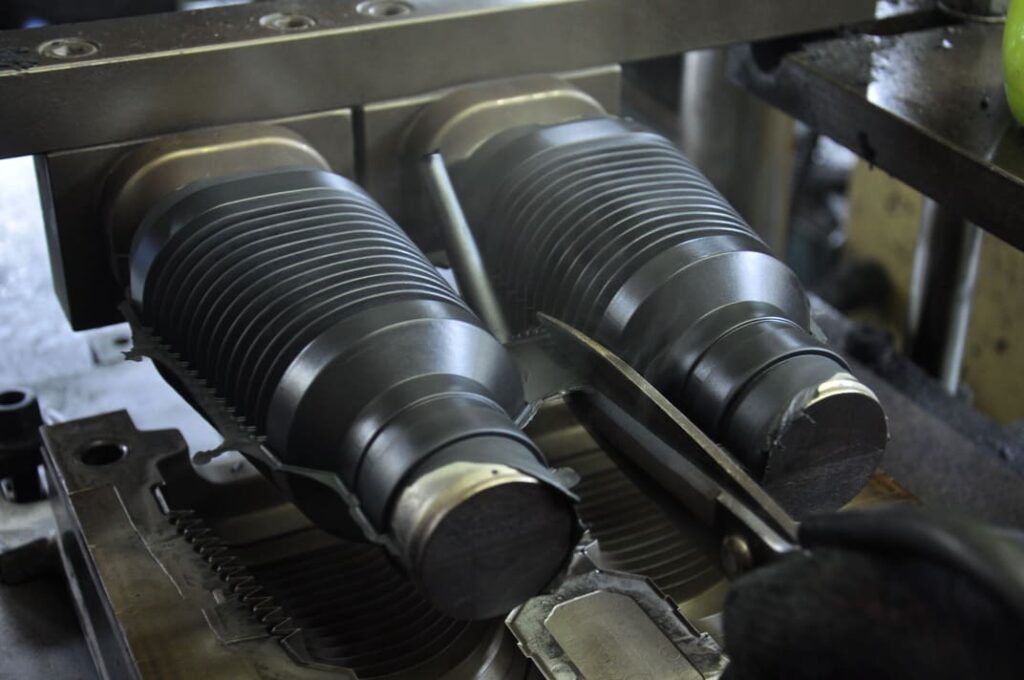EPDM and PTFE are both widely used materials in industrial applications, but each excels in different areas. Which one is the best for your needs?
EPDM and PTFE have unique properties. EPDM is better for flexibility and weather resistance, while PTFE offers superior chemical resistance and non-stick properties.
Understanding the differences between these two materials can help you make the right choice for your application. Let’s dive deeper.
What is EPDM and What is PTFE?
EPDM (Ethylene Propylene Diene Monomer) is a synthetic rubber, while PTFE (Polytetrafluoroethylene) is a type of plastic polymer.
EPDM is a rubber that’s great for flexibility and weather resistance, while PTFE is a non-reactive plastic, often used for its high chemical resistance and non-stick properties.
Key Characteristics of EPDM
EPDM is a highly versatile material, prized for its excellent weather, ozone, and UV resistance. It is often used in seals, gaskets, and hoses exposed to the elements. Additionally, EPDM can withstand high temperatures and has good resistance to water, steam, and a wide range of chemicals. However, it is not suitable for applications involving oils or fuels.
Key Characteristics of PTFE
PTFE is a high-performance plastic known for its exceptional chemical resistance, low friction, and non-stick properties. It is often used in applications where exposure to harsh chemicals is a concern, as it can resist almost all types of acids, bases, and solvents. PTFE also remains stable at high temperatures and has a very low coefficient of friction, making it ideal for bearings, seals, and gaskets in challenging environments.
Which Material Is Better for Flexibility?
Flexibility is essential in certain applications, especially for seals and gaskets. Let’s see how EPDM and PTFE compare in this area.
EPDM is more flexible than PTFE, making it ideal for seals and gaskets that need to deform and return to their original shape.
Flexibility of EPDM vs. PTFE
EPDM rubber excels in flexibility1, particularly in environments where materials need to expand and contract without losing their shape. This makes it an excellent choice for outdoor applications or places where sealing is required across a range of temperatures.
In contrast, PTFE, while highly durable and resistant to chemicals, lacks the same elasticity and flexibility as EPDM. It is more rigid and is better suited for static seals or applications where minimal movement occurs.
Which Is Better for Chemical Resistance?
If your application involves exposure to harsh chemicals, chemical resistance2 may be your top priority. Let’s compare the chemical resistance of EPDM and PTFE.
PTFE outperforms EPDM in terms of chemical resistance, as it can withstand a wider range of aggressive substances, including acids, bases, and solvents.
Chemical Resistance of EPDM vs. PTFE
While EPDM offers good resistance to water, steam, and many weak acids, it is not suitable for use with oils, fuels, or solvents. Over time, EPDM can degrade when exposed to harsh chemicals.
On the other hand, PTFE is almost impervious to a wide variety of chemicals, including oils, acids, and solvents. This makes PTFE ideal for applications in chemical processing or industries where exposure to aggressive substances is frequent.
Temperature Tolerance: EPDM vs. PTFE
Both EPDM and PTFE can withstand high temperatures, but their performance limits differ. Which one is better for extreme temperatures?
PTFE can handle higher temperatures than EPDM, making it the better option for high-heat applications.
Temperature Resistance of EPDM vs. PTFE
EPDM has a good temperature range and can typically withstand temperatures between -40°C to 150°C. This makes it suitable for applications in automotive, HVAC, and construction industries.
PTFE, however, has a broader temperature range, capable of withstanding temperatures from -200°C to 260°C. This makes PTFE the superior choice for high-temperature applications, such as in the aerospace and chemical processing industries.
Conclusion
In conclusion, whether EPDM or PTFE is better depends on the specific requirements of your application. If you need flexibility, weather resistance, and good general chemical resistance, EPDM may be the better choice. However, if chemical resistance and extreme temperature tolerance3 are your priorities, PTFE outshines EPDM. Both materials are strong contenders in their respective areas, and understanding the difference can help you select the right material for your needs.
Footnotes:
Learn about the significance of flexibility in materials like EPDM for outdoor applications, ensuring durability and performance. ↩
Explore this link to understand how EPDM and PTFE compare in chemical resistance, crucial for selecting the right material for your application. ↩
Discover the temperature tolerance of EPDM and PTFE to make informed decisions for high-heat applications. ↩








